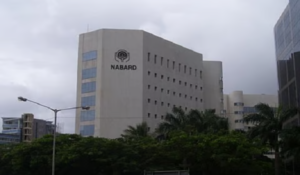IBPS RRB PO/Clerk Quantitative Quiz
Do you follow a proper strategy or Study Plan for IBPS RRB Mains 2019? Are you aiming IBPS RRB 2019 this time? If yes, then this is the section which can help you to do wonders if practiced well. A good attempt with a mix of accuracy can help you fetch good marks. The reasoning is a game of wits and mind. It is all about logics that a question may have. Speed and accuracy are what that matters the most in this section. The only way to achieve an ambitious goal is by practicing only. So, attempt the quiz of Reasoning ability that inculcates the important questions from the important topics. Do not miss out to practice the Quantitative aptitude quiz that is being provided on bankersadda.
Directions (1-5): Read the following graph carefully and answer the questions given below:-
Delhi University offers two courses PG and PhD. The information regarding number of students applied for these two courses and among them how many got selected from year 2004-2009 are shown by the graph given below:


Q1. What is the respective ratio of the number of students increase/decrease in the students got selected for PG in 2005 over year 2004 to the number of students increase/decrease in the number of students applied for PhD in year 2008 over year 2007?
(a) 847:900
(b) 847:890
(c) 900:847
(d) 860:895
(e) 854:900
.
S1. Ans (a)
Sol.
Q2. Average number of students got selected for PhD program is approximately what percent more/less than the average number of students applied for PG programs?
(a) 72% less
(b) 72% more
(c) 82% less
(d) 82% more
(e) 77% more
S2. Ans (a)
Sol.
Q3. Which year shows the highest difference between the number of students applied and got selected for PhD programs?
(a) 2004
(b) 2005
(c) 2006
(d) 2008
(e) 2009
S3. Ans (e)
Sol.
Q4. Ratio of number of students selected in 2005, 2007 and 2009 for PhD course to number of students applied in 2004, 2006 and 2008 for same course is:
(a) 2389 : 4980
(b) 2581 : 4700
(c) 2679 : 4321
(d) 2471 : 5321
(e) None of the above
S4. Ans (b)
Sol.
Q5. In PG program which year shows highest percentage increase/decrease in number of students selected over previous year?
(a) 2005
(b) 2006
(c) 2007
(d) 2008
(e) 2009
S5. Ans (a)
Sol.
Q6.If the curved surface area of a cone is thrice that of another cone and slant height of the second cone is thrice that of the first, find the ratio of the area of their base.(first cone to second cone)
(a) 81 : 1
(b) 9 : 1
(c) 3 : 1
(d) 27 : 1
(e) 11 : 1
S6. Ans.(a)
Sol.
Q7. Vessels A and B contain mixtures of milk and water in the ratios 4 : 5 and 5 : 1 respectively. In what ratio should quantities of mixture be taken from A and B to form a mixture in which milk to water is in the ratio 5:4?
(a) 2 : 5
(b) 4 : 3
(c) 5 : 2
(d) 2 : 3
(e) None of these
S7. Ans.(c)
Sol.
Q8. The marked price of an article is Rs. 100. If the article is sold at a discount of 10%, then 35% profit is realised. How much loss or profit will be made if it is sold for Rs. 30 less than market price?
(a) 5% loss
(b) 8% gain
(c) 5% gain
(d) 8% loss
(e) None of these
S8. Ans.(c)
Sol.
Q9. Neeraj and Gaurav started a business in partnership by investing Rs. 10,000 and Rs. 4000 respectively. Condition of partnership is that Gaurav got Rs. 100 per month for management of the business. After paying 5% interest on the capital, annual profit is distributed in the ratio of their investment. Find the share of their profit, if the annual profit is Rs. 4000.
(a) Rs. 3000 and Rs1000
(b) Rs. 2500 and Rs1500
(c) Rs. 1500 each
(d) Rs. 2000 each
(e) None of these
S9. Ans.(d)
Sol.
Q10. Pankaj calculates his profit percentage on the selling price whereas Chandan calculates his profit on the cost price. They find that the difference of their profit is Rs. 135. If the selling price of both of them are the same, and Pankaj gets 30% profit and Chandan gets 25% profit, then find their selling price.
(a) Rs. 1250
(b) Rs. 1150
(c) Rs. 1450
(d) Rs. 1350
(e) none of these
S10. Ans.(d)
Sol.
Directions (11 – 15): In the given questions, two quantities are given, one as ‘Quantity I’ and another as ‘Quantity II’. You have to determine relationship between two quantities and choose the appropriate option:
Q11. Train A cross a platform of length 520 meters in 22.8 sec and a man in 7.2 sec.
Quantity I If train A cross train B running in same direction at 96 km/hr in 63 seconds then find the length of train B.
Quantity II What is length of train C having speed of 90 km/hr and cross train A in 7.2 sec running in opposite direction.
(a) Quantity I > Quantity II
(b) Quantity I < Quantity II
(c) Quantity I ≥ Quantity II
(d) Quantity I ≤ Quantity II
(e) Quantity I = Quantity II or no relation
S11. Ans.(e)
Sol.
Q12. Ratio of age of Bhavya & Veer three years before was 7 : 8 and after six year it will be 10 : 11. Ankit is two years older than Bhavya, while Ayush is four years younger than that of Veer. The time when Bhavya and Veer completed their graduation, the ratio of their respective ages at that time was 20 : 23
Quantity I Sum of age of Ankit & Ayush at the time when Bhavya & Veer respectively completed their graduation.
Quantity II Average age of P, Q & R, two years hence will be 38 years and ratio of present age of Q & R be 16 : 9. P is 33 years order, ratio of age of R & T eight years hence will be 7 : 8. M is four years older than Q and ratio of present age of M & N is 13 : 14. Find average age of N & Q.
(a) Quantity I > Quantity II
(b) Quantity I < Quantity II
(c) Quantity I ≥ Quantity II
(d) Quantity I ≤ Quantity II
(e) Quantity I = Quantity II or no relation
Q12. Ans.(b)
Sol.
Q13. Length of body diagonal of a cube is 60 cm, if cube is melted and formed some smaller cubes with side of 4 cm each or cube is melted and formed some cuboids of each having length of 8 cm, width of 5 cm & height of 2 cm.
Quantity I Find the difference between increase in total surface area of all smaller cubes with respect to original cube & increase in total surface area of all cuboids formed with respect to original cube (in m2).
Quantity II m2
(a) Quantity I > Quantity II
(b) Quantity I < Quantity II
(c) Quantity I ≥ Quantity II
(d) Quantity I ≤ Quantity II
(e) Quantity I = Quantity II or no relation
S13. Ans(a)
Sol.
Q14.
Quantity I: A man has two solid balls. Ratio between radius of first ball and second ball is 4 : 3. If man cut the second ball from middle then difference between total surface area of first ball and total surface area of a part of second ball is 1424.5 cm². Find value of radius of bigger ball?
Quantity II: Height of a cylindrical vessel is equal to side of a square, having area is 256 cm². If volume of cylindrical vessel is 22176 cm³ then find the radius of cylindrical vessel.
(a) Quantity I > Quantity II
(b) Quantity I < Quantity II
(c) Quantity I ≥ Quantity II
(d) Quantity I ≤ Quantity II
(e) Quantity I = Quantity II or no relation
S14. Ans.(b)
Sol.
Q15.
Quantity I: Overall profit percentage if the cost prices of two shirts are equal. One shirt is sold for 20% profit and the other is sold for 10% loss.
Quantity II: Profit % made in selling each meter if the profit made in selling 20 m of a cloth equals the cost price of 5 m of that cloth.
(a) Quantity I > Quantity II
(b) Quantity I < Quantity II
(c) Quantity I ≥ Quantity II
(d) Quantity I ≤ Quantity II
(e) Quantity I = Quantity II or No relation
S15. Ans.(b)
Sol.
- Quantitative Aptitude Study Notes for Bank Exams
- 100 MCQs Data Interpretation | Download Free PDF’s of DI
- Quantitative Aptitude Questions for all Competitive Exams
Get Free Study Material For IBPS RRB PO/Clerk Main 2019





















 NABARD Grade A Result 2025 to be Release...
NABARD Grade A Result 2025 to be Release...
 Daily Current Affairs Quiz 09th January,...
Daily Current Affairs Quiz 09th January,...
 09th January, 2026 Current Affairs (Dail...
09th January, 2026 Current Affairs (Dail...








